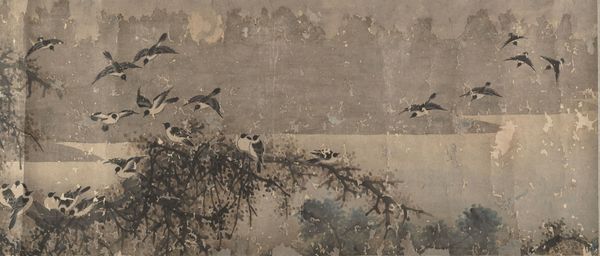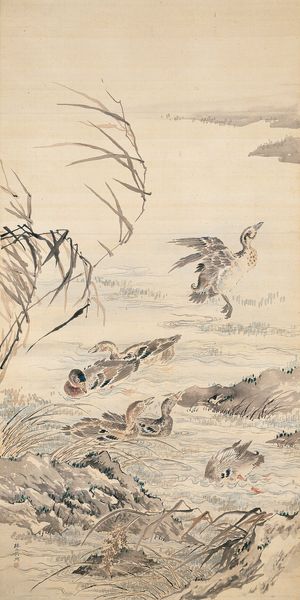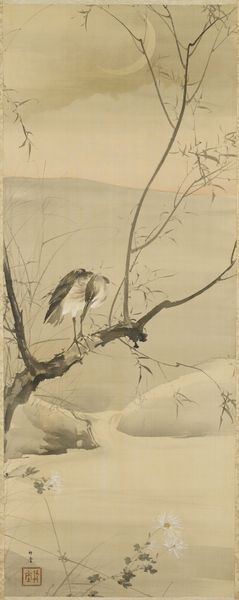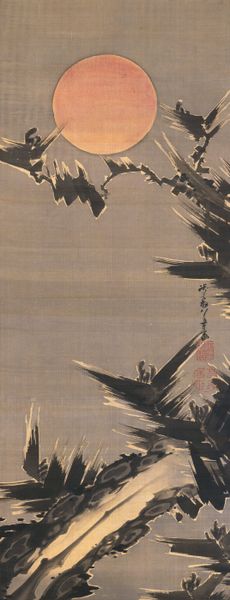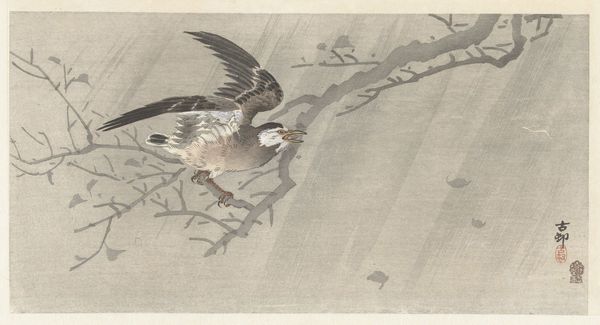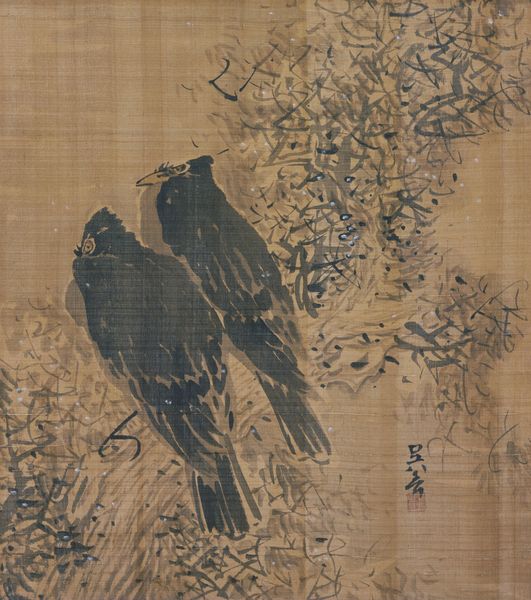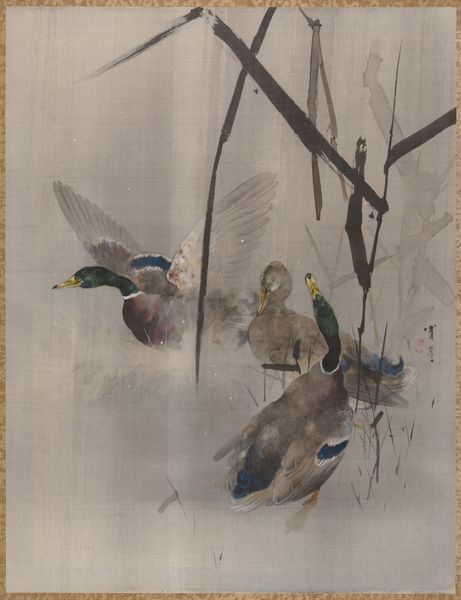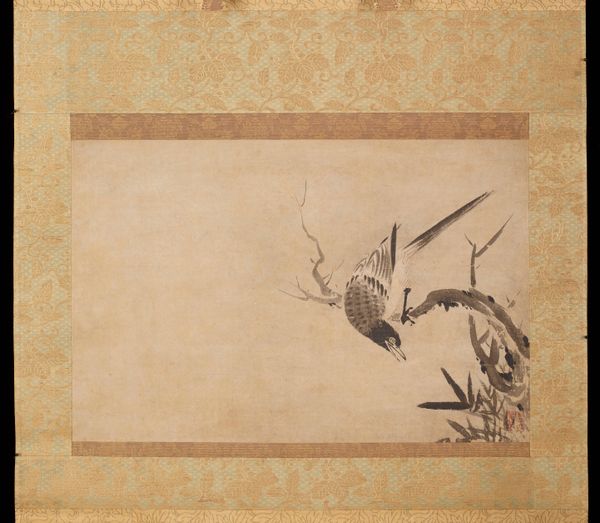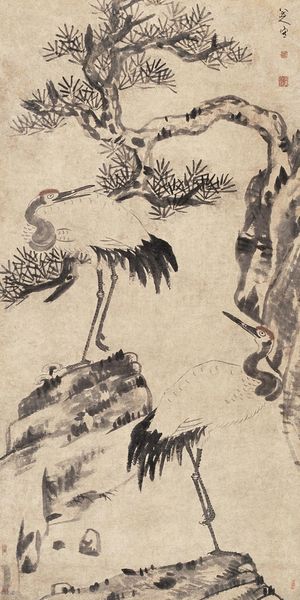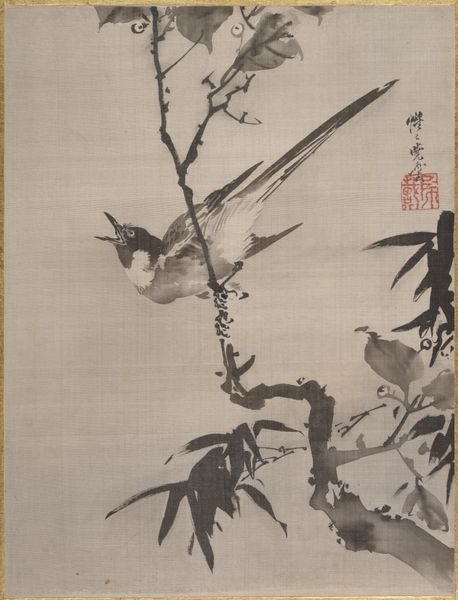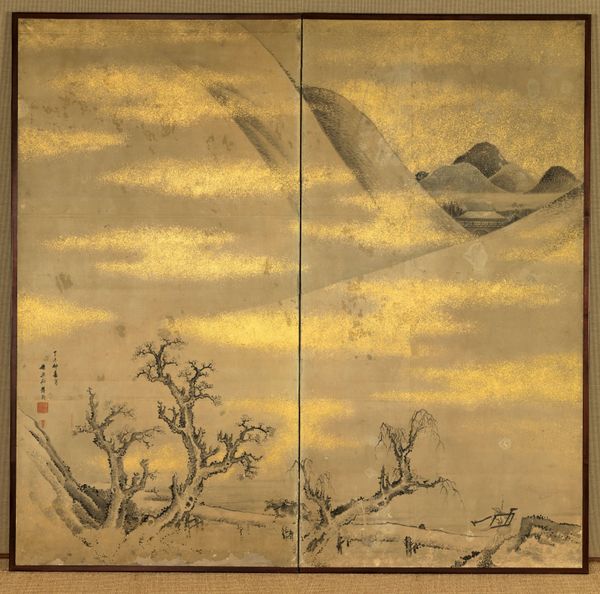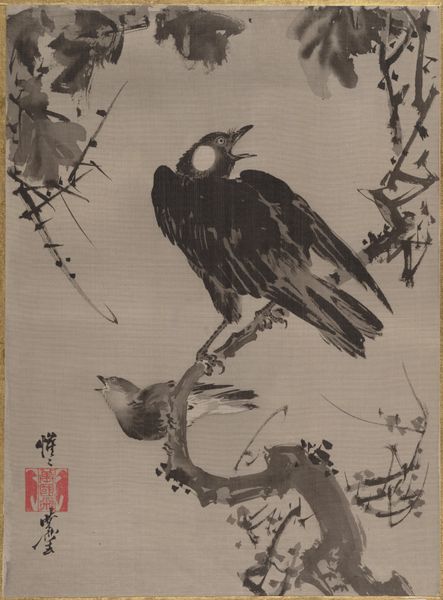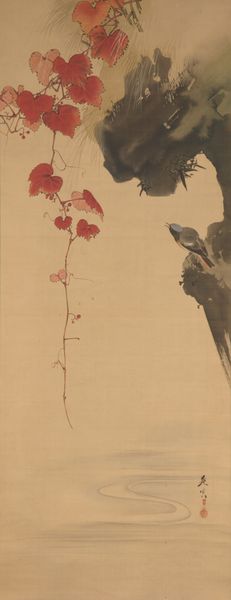
Dimensions: 50 7/16 × 19 1/2 in. (128.11 × 49.53 cm) (image)82 15/16 × 25 3/4 in. (210.66 × 65.41 cm) (mount, without roller)
Copyright: Public Domain
Morikawa Sobun painted “Plovers under the Moon” sometime between the late 19th and early 20th century. Sobun was working during the Meiji period in Japan, a time of rapid modernization and cultural change. This painting depicts a flock of plovers in a muted, ethereal landscape dominated by a large, pale moon. The scene evokes a sense of quietness and solitude, something that can be read as a nostalgic longing for a more traditional, natural world amidst the sweeping social changes of the Meiji era. The plovers themselves, with their delicate features and migratory nature, can be seen as symbols of transient beauty or even of the individual navigating a changing society. The choice of birds as the subject is also important. Birds in Japanese art often represent freedom, joy, and the connection between the earthly and spiritual realms. This adds a layer of emotional depth to the artwork, inviting us to reflect on our own place within the natural world and the passage of time.
Comments
No comments
Be the first to comment and join the conversation on the ultimate creative platform.
